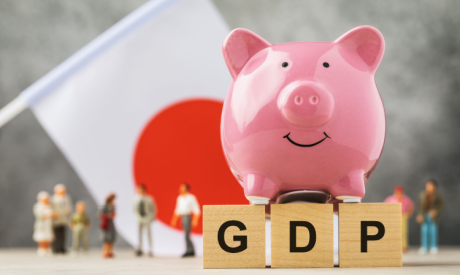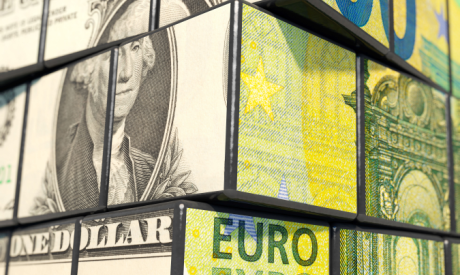Yen sell-off continues as BoJ leaves monetary policy unchanged
JPY: BoJ stands pat as policy divergence widens
The yen has continued to trade at weaker levels during the Asian trading session following the BoJ’s latest policy update. The yen has fallen sharply this month in response to expectations for widening monetary policy divergence between the BoJ and other major central banks. It has resulted in the yen falling below last year’s low from September against an equally-weighted basket of other G10 currencies. The yen has weakened by over -3.0% against all other G10 currencies this month with the only exception being against the US dollar where losses have been relatively more modest at around -1.0%. The best performing yen crosses have been AUD/JPY (+7.0%), NOK/JPY (6.5%) and NZD/JPY (+4.7%). The combination of improving global investor risk sentiment, falling FX volatility and the widening monetary policy divergence between the BoJ and other major central banks is a recipe for yen weakness. The BoJ’s latest policy update did not disrupt the yen weakening trend. The BoJ decided to leave their loose monetary policy conditions unchanged.
It stands in contrast to the recent run of hawkish policy surprises this month from the RBA, BoC, Fed (click here) and ECB that has lifted yields outside of Japan back up towards year to date highs. The widening yield spreads between Japan and overseas alongside lower FX and rates volatility is making yen funded carry trades more attractive, and contributing to the yen becoming more deeply undervalued.
JPY HITS FRESH COVID LOWS

Source: Bloomberg & Macrobond
EUR: Hawkish ECB policy reinforces recent rebound for euro
The euro was boosted yesterday by the ECB’s hawkish policy update. It has helped to lift EUR/USD back above 1.0950 overnight as it moves further above the low from the end of last month at 1.0635 while EUR/JPY has surged higher up to the 154.00-level since the collapse of Lehman Brothers in September 2008 when the unwind of yen funded carry trades were in full swing. The ECB raised rates by a further 25bps as expected which has lifted the deposit rate up to 3.50%. The main hawkish policy surprise was the updated policy guidance. In the accompanying press conference, President Lagarde signalled clearly that the ECB is “very likely” to raise rates again at the next meeting in July. Furthermore, she stated that the Governing Council has not thought above skipping or pausing their rate hike cycle. The comments have pushed back against any thoughts that the ECB was close to ending their rate hike cycle. It fits with our forecast for another 25bps hike in July, and has raised the probability of a final 25bps hike in September that would the lift the deposit rate to a peak closer to 4.00%.
The ECB is placing more emphasis on the outlook for core inflation when it sets monetary policy. President Lagarde stated that the ECB was not satisfied with the inflation outlook which required further policy tightening. She emphasized that the ECB needs to be confident that core inflation is heading down. Core inflation has eased in recent months falling to 5.3% in May from a peak of 5.7% in March. However, core inflation is expected to pick back up again over the summer months. Bloomberg has highlighted that shifts in the weights used to construct the index will boost contributions from travel-related services, and base effects from a cheaper public transport program in Germany between June and August of last year will result in core inflation rebounding going into the high season for tourism. Clear evidence that core inflation is heading down may not emerge until the autumn or beyond.
The upward revision to the ECB staffs’ latest core inflation forecasts will have made the Governing Council more nervous over the risk of a persistent inflation overshoot. The staffs’ forecasts for core inflation were revised significantly higher by 0.5 percentage point for both this year and next to 5.1% and 3.0% respectively. The core inflation forecast for 2025 was raised as well but only marginally by 0.1 percentage to 2.3%. The upward revisions to core inflation were more important than the slight downward revisions to the growth outlook for the euro-zone. The GDP forecasts for this year and next were revised marginally lower by 0.1 percentage points to 0.9% and 1.5% respectively. President Lagarde did not appear overly concerned that the euro-zone has economy had fallen into technical recession at the start of this year and activity remains weak at the start of Q2. Please see our FX Focus report for more details (click here).
KEY RELEASES AND EVENTS
|
Country |
BST |
Indicator/Event |
Period |
Consensus |
Previous |
Mkt Moving |
|
EC |
10:00 |
CPI (YoY) |
May |
6.1% |
7.0% |
!!! |
|
EC |
10:00 |
Wages in euro zone (YoY) |
Q1 |
3.30% |
5.10% |
!! |
|
US |
12:45 |
Fed Waller Speaks |
-- |
-- |
-- |
!! |
Source: Bloomberg



